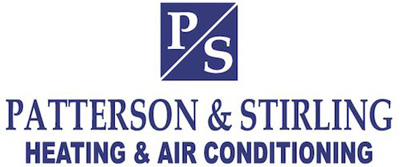
A dependable HVAC system is vital for a comfortable and energy-efficient home, but it’s also a significant investment. Every homeowner deserves the most productive comfort solutions possible, which is why HVAC rebates are so beneficial. They can help make sure high-efficiency furnaces, air conditioners and other equipment is more affordable.
HVAC efficiency standards are climbing next year, so now’s a great time to compare your options. Different companies, organizations and even government entities are promoting rebates in 2023 to help everyone secure a new, high-efficiency HVAC system.
Receive a Tax Rebate by Installing a High Efficiency Furnace
Lots of manufacturers of high-efficiency furnaces provide rebates toward buying a new system. These furnaces feature energy-efficient components such as variable-speed blower motors, which allow the thermostat to refine how much heating is released. It’s a fantastic way to decrease energy use overall. Local utilities also share furnace rebates as less energy use translates to less strain on the local energy grid.
The government’s ENERGY STAR® program is also helpful for obtaining a furnace rebate. You can enter your ZIP Code to find out which rebates you could be eligible for. Equipment featuring the ENERGY STAR® rating means it satisfies your region’s standards for energy-efficient operation.
Rebates for Air Conditioning Systems
Plenty of of the same rebates for high-efficiency furnaces are also applicable to air conditioners. You can save hundreds on new installation for equipment from a leading brand like Lennox. Just consult your local utility companies to find out which makes and models are suitable. Additionally, you can usually join federal and local rebates for even higher savings. Don’t hesitate to see what all you can find, because it can quickly add up to 10% of a new, high-efficiency AC system
Potential Rebates for Smart Home Accessories Like Smart Thermostats
A smart thermostat is a particularly valuable upgrade to your home comfort system. With intelligent programming, you can enhance the daily schedule. Utility companies appreciate this kind of efficiency, and so most extend rebate programs for new smart thermostats. Over time, these rebates effectively allow you to get a free smart thermostat!
These utility companies also provide programs where they exchange lower rates for the capability to adjust your thermostat during peak energy use. This helps avoid strain on the grid, especially when heat waves or cold fronts arrive. When enrolled in this program, your thermostat can automatically be changed by a few degrees.
More Cost-Saving Options: High Efficiency Products and Home Improvement Credits
A little different from rebates, tax credits are also offered for the purchase and installation of energy-efficient HVAC systems. For example, the Inflation Reduction Act restarted a program in 2021 that supplied credits for up to 10% of the project’s cost. The new credits are now worth 30% of the cost and may be claimed every year as opposed to only once. These credits are eligible for a much wider variety of projects, including home energy audits, electrical, insulation, ventilation, and even your doors and windows! The programs are fashioned to provide the most benefits for lower-income households, maximizing the improvements to HVAC efficiency across the country.
New Legislation for Heat Pump Rebates
The recently passed Inflation Reduction Act included separate legislation referred to as the High-Efficiency Electric Homes and Rebates Act, or HEEHRA. This incentive is especially targeted toward heat pump technology, which transfers heat instead of creating it by burning fuel. To motivate more people to change to this energy-efficient comfort system, these rebates are substantially higher versus incentives for AC units and furnaces.
If the household’s income is less than 80% of the local median, you could use the rebates to cover 100% of the costs of a new heat pump. Households meeting 80-150% of the average income can pay for 50% of equipment and installation costs.



